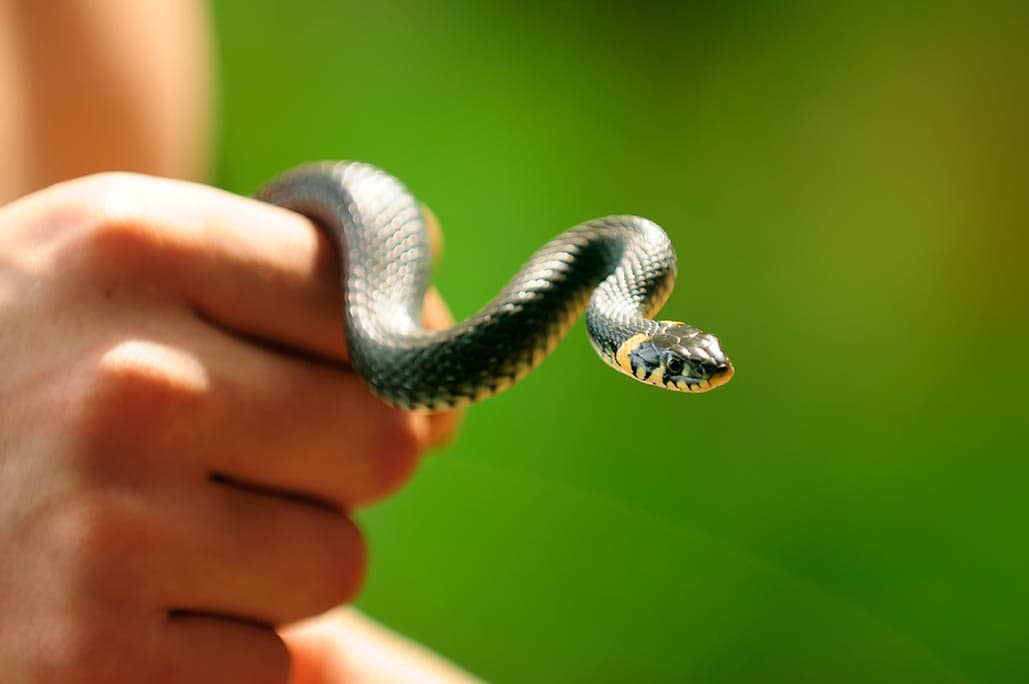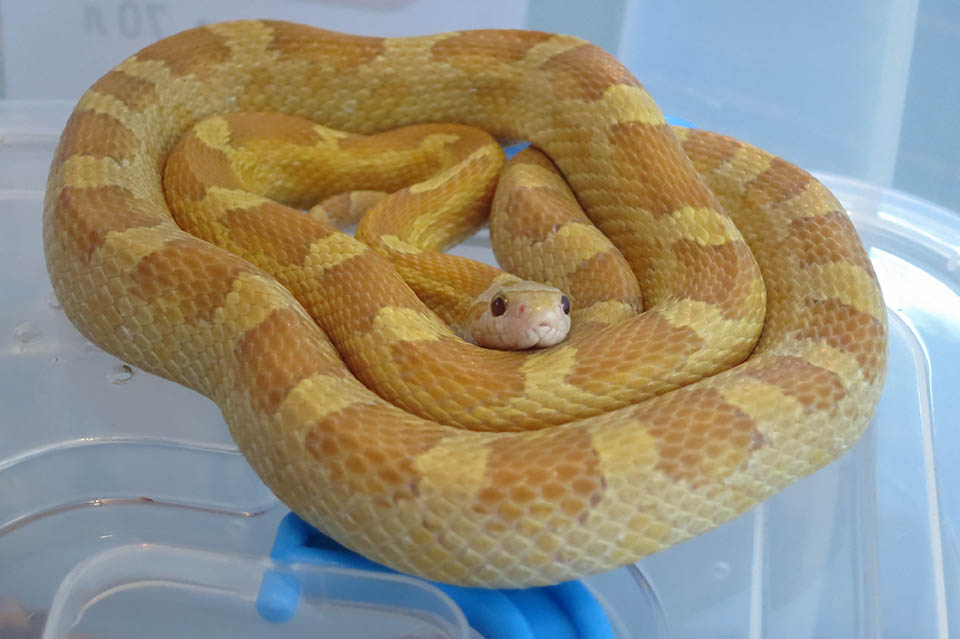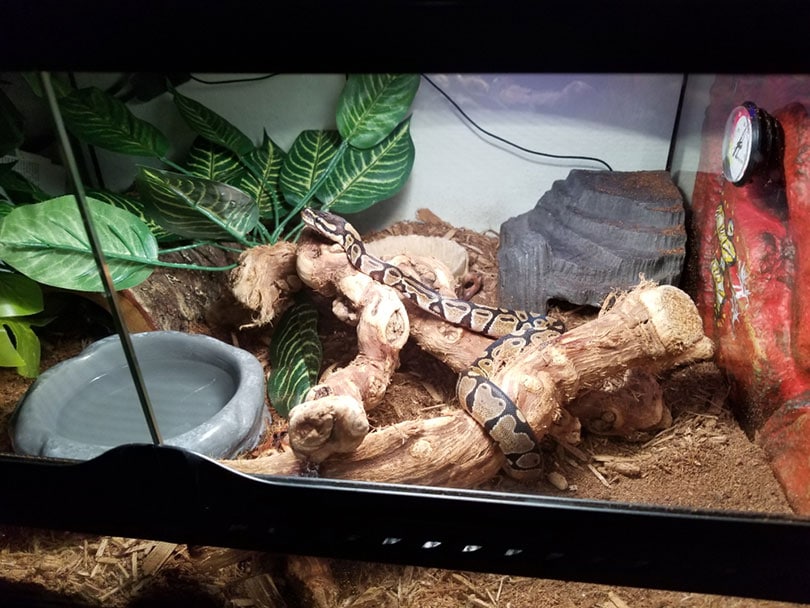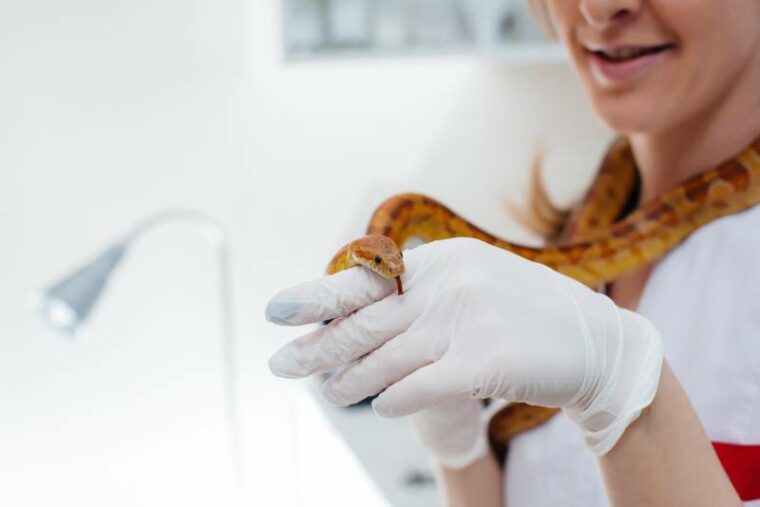
Pet snakes are known for being very hardy and low-maintenance pets but like any other animals, they can develop certain health conditions that will warrant attention. Most health issues in pet snakes are related to poor husbandry and are easily prevented with proper care and nutrition.
It’s always important to be aware of what kind of ailments can affect your pet and what kind of signs to look out for. Keep reading to learn more about the most common diseases observed in pet snakes, their causes, and how they are diagnosed and treated.
The 7 Common Diseases in Pet Snakes
1. Respiratory Infection
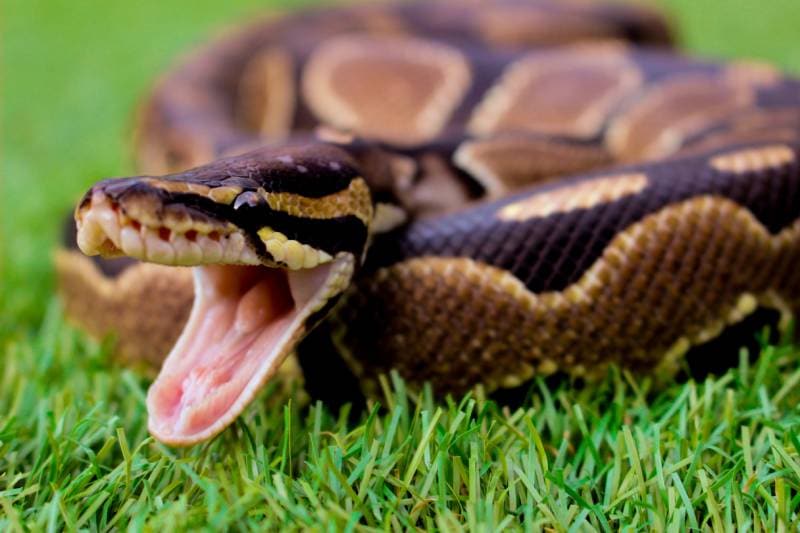
Respiratory infection is an infectious disease of the respiratory tract. This is a common condition in captive reptiles and is most often caused by bacteria but may also be due to viruses, fungal infections, or parasites.
Causes
Respiratory infections are often the result of poor husbandry. Snakes can easily fall ill if they are kept in unsanitary conditions or if the temperature and humidity levels in their enclosure do not mimic their natural environment. There are many different species of snake in the pet trade, so it’s important to understand their husbandry needs to prevent any negative health conditions that can easily result from improper care.
Diagnosis
A veterinarian will perform a physical examination and go over the clinical signs the snake is exhibiting. Depending on how severe the infection is, diagnostics may include X-rays, blood work, fecal tests, and even a culture from the respiratory tract may be obtained to determine the exact microorganism involved.
Treatment
Respiratory infections must be treated with antibiotics that may be given by mouth, injection, or through inhalation. If it has been determined that either parasites or fungi are involved, other medications will also be included.
Respiratory infections can easily reoccur if the underlying reason for the infection is not solved. In most cases, it will involve the owner doing a thorough cleaning of the environment and taking proper steps to ensure the snake’s enclosure is kept clean and at the proper temperature gradient and humidity levels.
2. Dysecdysis (Incomplete or Abnormal Shedding)
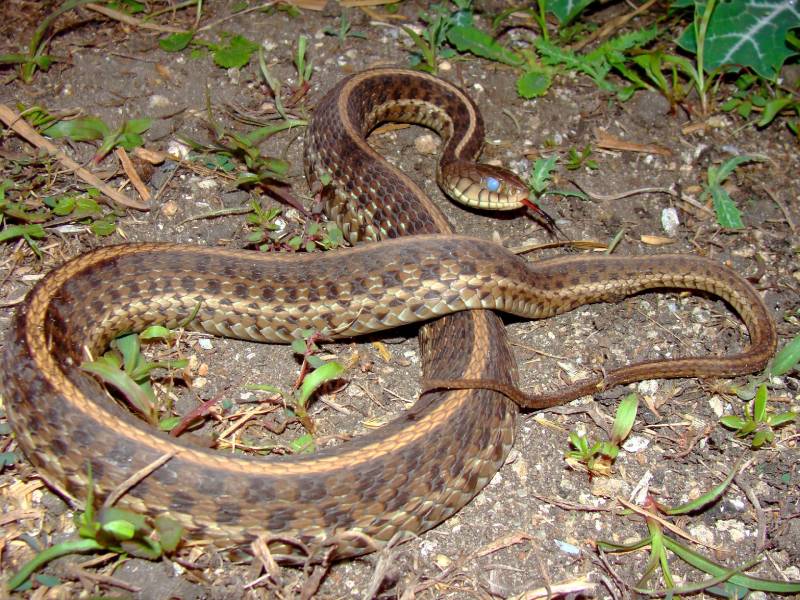
Dysecdysis is not considered a disease but is considered incomplete shedding of the skin. This is often referred to as a stuck shed in the reptile community. Healthy snakes will shed their entire epidermis at once, unlike other reptiles like lizards that shed in pieces. If a snake is unable to shed the entire skin at once, there is something amiss.
Causes
Incomplete shedding is a sign there is an underlying problem. Most often this is due to poor husbandry for the specific species. Having temperatures and humidity levels outside of the snake’s natural range can easily cause issues with shedding. Inadequate nutrition, handling the snake during a shed, parasites, bacterial infections, and a lack of furnishings in the terrarium to assist in the shedding process can also contribute to dysecdysis.
Diagnosis
It’s easy to identify an incomplete shed by observing the snake. When a snake sheds healthily, there will be no leftover skin anywhere on the body and you will notice an entire piece of skin in the shape of your snake within the enclosure. An incomplete may slough off in pieces and some old skin may be left behind anywhere on the body, especially around the eyes and at the tip of the tail.
Treatment
An incomplete shed can typically be handled at home by soaking the snake in warm water or by wrapping them in a damp towel. You should never try to peel the skin off, as it can damage the new skin and cause the snake significant injury. Any time you are concerned about the leftover shed, reach out to your veterinarian for further guidance and assistance.
3. Infectious Stomatitis

Infectious stomatitis is most often referred to as mouth rot, mouth canker, or ulcerative stomatitis. This is a painful condition that comes about due to a bacterial infection within the soft tissue in the mouth. If left untreated it may even spread into the bone. The most common bacteria associated with infectious stomatitis include but are not limited to pseudomonas, aeromonas, klebsiella, and salmonella.
Causes
Snakes can develop mouth rot for several reasons. Most often, it is due to a suppressed immune system being unable to properly fight off the isolated bacteria in question. Suppressed immunity can be the result of stress due to improper temperature and/or humidity, an unsanitary environment, inadequate nutrition, or even underlying disease. This can also happen as a result of trauma to the mouth.
Diagnosis
Diagnosis of infectious stomatitis is done through a physical examination by a licensed veterinarian. They may even collect a sample of affected tissue to obtain a bacterial culture and find the specific culprit.
Treatment
Prompt treatment is very important considering this is a painful condition that can become more severe and lead to further problems. Treatment typically involves either oral or injectable antibiotics and proper cleaning of the affected area with antiseptics. The underlying cause of the condition will also need to be addressed to prevent reoccurrence. Occasionally, infectious stomatitis may be so severe that surgical removal of dead tissue may be necessary.
4. Scale Rot

Scale rot is a blanket term used to describe various types of dermatitis or skin infections seen in snakes. Scale rot may also be used to describe burns, abscesses, and any secondary bacterial infections associated with the skin. Signs of the conditions that fall under this term are easily observed and if possible, best treated in the early stages to prevent open sores, blisters, and ulcerations.
Causes
The most common cause of scale rot is poor husbandry. This includes unsanitary living conditions or improper temperature and/or humidity levels. Poor nutrition may also be associated but is much less common. While skin conditions appear to be surface level, it is important to figure out what the root cause of the problem is so that it can be solved and prevented from happening again.
Diagnosis
If scale rot is suspected, the snake should be evaluated by a veterinarian. They will go over the snake’s medical history and clinical signs and will likely ask you about your care practices. It is important to have the condition diagnosed as quickly as possible to prevent the condition from becoming worse and leading to a more severe infection.
Treatment
Treatment often includes the use of either oral or injectable antibiotics. Sedation may be necessary in more severe cases to properly clean the affected area and remove any dead tissue as needed. Proper treatment will also include correcting the root cause of the problem.
5. Parasites
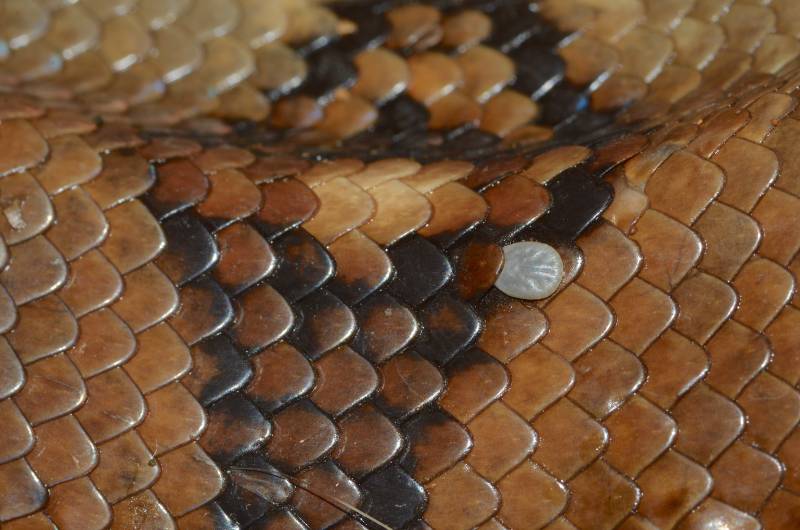
Snakes can be affected by both internal and external parasites, and both are quite common in captive reptiles. Internal parasites include roundworms, tapeworms, or even cryptosporidium, which affect the lining of the stomach and intestines. More often than not, internal parasites go unnoticed until a routine exam where a fecal test is performed.
Mites are external parasites that reproduce quickly and will cause symptoms once the infestation becomes more severe. Larger infestations will feed on so much blood it may lead to lethargy, anemia, and even death if left untreated.
Causes
Internal parasites are often ingested by the snake while mites are typically introduced through new animals, substrate, or by the handler transferring them from another location to the snake through contact. Mites are fairly common at reptile expos and pet stores because of how many reptiles are present at these locations.
Diagnosis
Diagnosing internal parasites is done via a fecal exam completed by a veterinarian. Mites are typically easy to identify since they are visible to the naked eye. But they are incredibly small, and owners may not even notice until they observe their snake soaking in the water dish excessively. Mites can be seen in the enclosure, hidden within the scales, and around the eyes and mouth.
Treatment
Treatment for parasites will be dependent on the type of parasite affecting the snake. Antiparasitic medications will be administered by the veterinarian if internal parasites are the issue.
Mites can be difficult to treat, and it can take several weeks to rid an infestation. Soaking the snake in gentle dish soap or even olive oil can help treat the mites on the skin. The enclosure will need to be thoroughly cleaned and disinfected frequently as you work to treat the mites.
Certain sprays are made specifically for snake mites but always use caution with these insecticide sprays around your sensitive snake. Always speak to your veterinarian if you have any questions on how to take care of a mite problem.
6. Septicemia
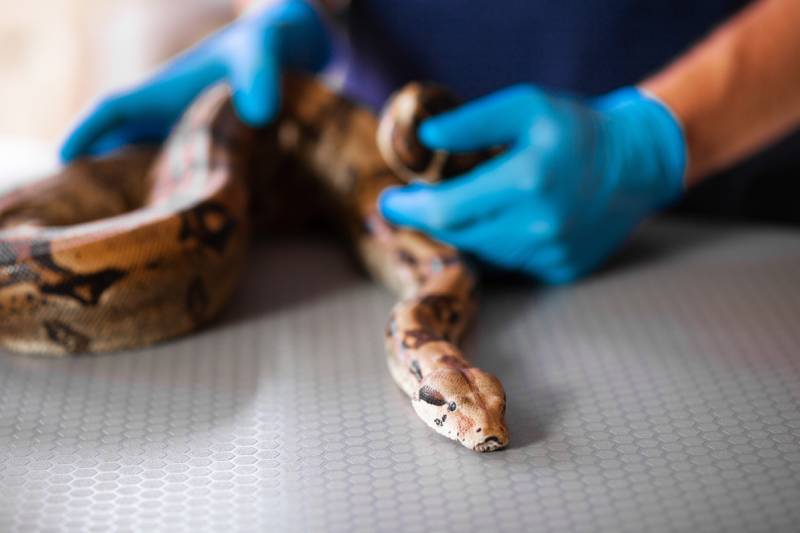
Septicemia is the body’s extreme response to infection. This condition occurs when bacteria and toxins proliferate in the bloodstream and organs, quickly leading to tissue damage, organ failure, and death. Snakes with septicemia are critically ill and close to death.
Causes
Bacteria can enter the bloodstream through localized infection, traumatic injury, or even parasite infestations. This is often due to poor husbandry practices and snakes that are kept in unsanitary enclosures, are fed improperly, do not have appropriate temperature and humidity levels, or are under significant stress are more susceptible to septicemia.
Diagnosis
Septicemia can be diagnosed through a physical exam and blood work completed by the veterinary staff. Once diagnosed, prompt treatment is necessary to save the snake’s life.
Treatment
This condition is fatal if left untreated and if it is suspected that a snake has septicemia, immediate veterinary care is necessary. Treatment includes systemic antibiotics, warm basking areas, fluid therapy, and nutritional support through recovery.
7. Inclusion Body Disease (IBD)
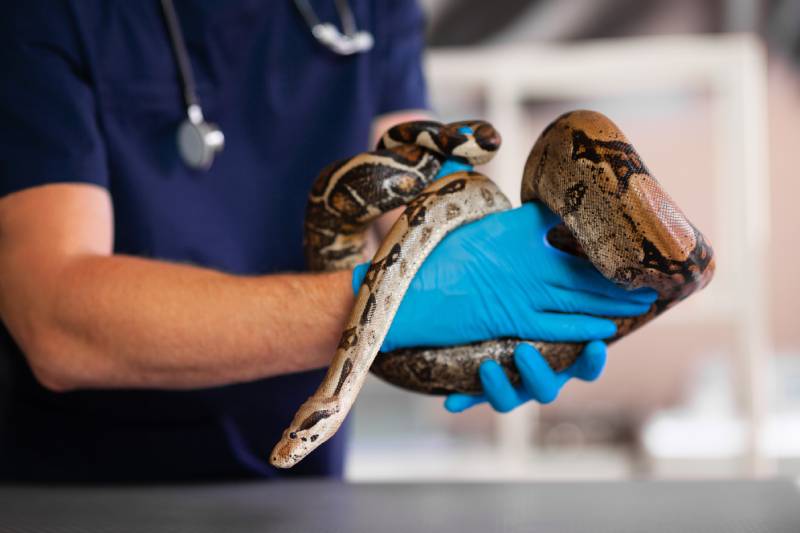
Inclusion body disease is a severe, fatal viral disease that is transmitted easily among captive snakes. It affects snakes in the Boidae family, which are various species of pythons and boas. When infected, pythons will often show signs quickly, while boas may carry the virus for up to a year or more without showing any indication.
Causes
While inclusion body disease is easily transmitted, experts do not yet understand exactly how transmission works, other than that it’s easily passed from snake to snake. The exact cause of the disease is also unknown, though there is substantial evidence that it is related to an unusual arenavirus. There is still much more to be learned about IBD.
Diagnosis
If IBD is suspected, the veterinarian will do a thorough physical examination and go over the signs the snake is exhibiting. Blood tests and X-rays may be performed and up until recently, this disease could only be diagnosed under a microscope by observing the inclusion bodies within the blood cells, but there is now a PCR test available.
Treatment
There is currently no treatment for inclusion body disease and the affected snake will ultimately die. Humane euthanasia is often recommended, as the symptoms only worsen, and the snake will be unable to eat and will lose motor function.
Tips for Keeping Your Pet Snake Healthy
Only Purchase Healthy, Captive Bred Specimens
Not only is there much controversy surrounding the sale of wild-caught reptiles in the pet trade for ethical reasons, but wild-caught specimens are much more likely to carry disease when compared to captive-bred animals. Captive-bred snakes that come from reputable breeders are the best way to go if you are looking for a pet snake.
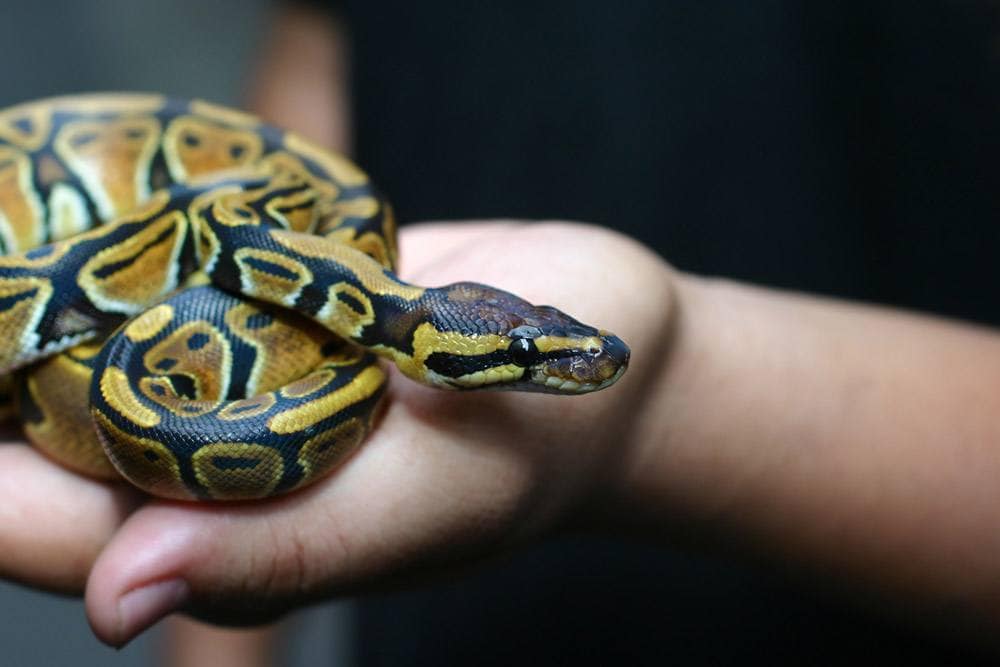
Know Your Species
It is incredibly important to be familiar with the specific species of snake you are bringing into your care. Care requirements will vary depending on the species and there are numerous snake species available in the pet trade.
These animals come from various places all across the globe and are built for very specific climates and habitats. You will need to understand the specific care requirements for your snake by doing your research on the species and discussing care with a reputable breeder and your veterinarian.
Always Maintain Proper Husbandry
Improper husbandry is often the reason that captive snakes suffer from health conditions. This is very easily preventable with knowledge and proper care. Make sure you are keeping the temperature and humidity at the appropriate levels for your species of snake.
Ensure you provide the correct substrate and habitat furnishings, as well as provide fresh, clean water. Keep up with regular cleaning of the enclosure and always remove any urates or fecal matter from the terrarium through spot cleaning as needed.
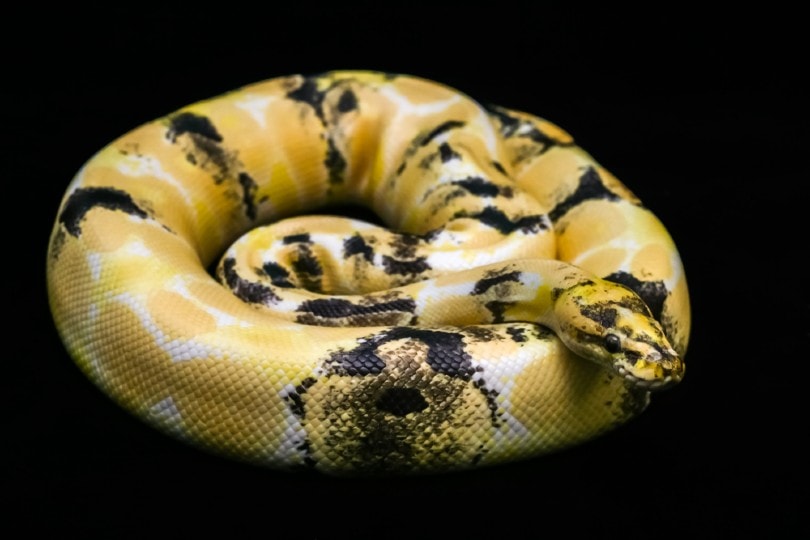
Feed them an Appropriate Diet
All snakes are carnivores that eat whole prey, which is what you will need to provide. More often than not, frozen rats or mice will make up a pet snake’s diet. Make sure you are feeding appropriately sized prey items for your snake’s body size. It is highly recommended that frozen-thawed rodents be offered rather than live to prevent the snake from becoming injured or being infected with disease or parasites.
Establish Care with an Experienced Veterinarian
Not every veterinary clinic will be able to provide care for pet reptiles. When you decide to have a snake as a pet, you will need to research veterinary clinics in your area that are experienced with caring for snakes. If you ever have any questions about the health and welfare of your snake or if you notice any unusual physical signs or behaviors, always reach out to your veterinarian for assistance.
Conclusion
There are several common diseases and health conditions that pet snakes commonly suffer from. More often than not, these diseases are highly preventable through proper care and husbandry practices. It is very important to understand the specific needs of your pet snake, as every species has unique care requirements that must be met to ensure its overall health. If you ever have any concerns about your snake’s health, do not hesitate to contact your veterinarian.
Featured Image Credit: Andrii Medvednikov, Shutterstock

